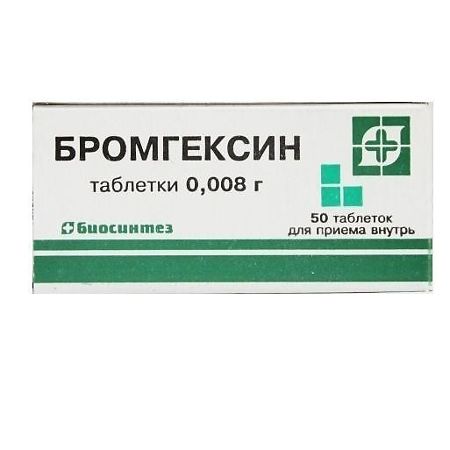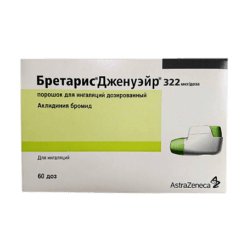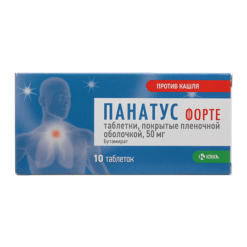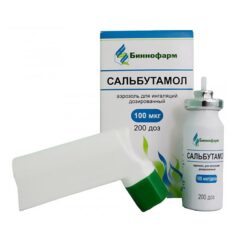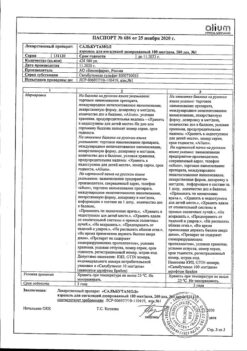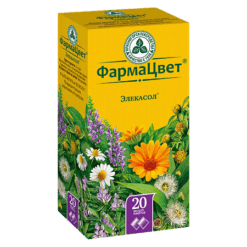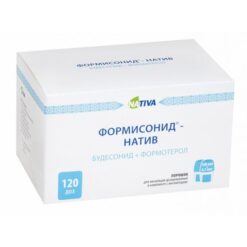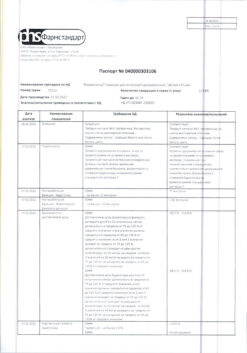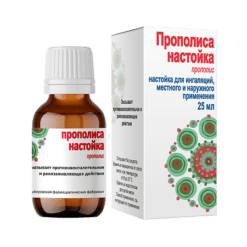No products in the cart.
Bromhexin, tablets 8 mg, 50 pcs.
€1.00
Out of stock
(E-mail when Stock is available)
Description
Bromhexin is a mucolytic agent with expectorant action. It reduces the viscosity of bronchial secretion due to depolarization of acidic polysaccharides contained in it and stimulation of secretory cells of the bronchial mucosa that produce secretion containing neutral polysaccharides. Bromhexin is believed to promote the formation of surfactant.
Pharmacokinetics
Bromhexine is rapidly absorbed from the GI tract and undergoes intensive metabolism during “first passage” through the liver. Bioavailability is about 20%. In healthy patients Cmax in plasma is determined after 1 hour.
Widely distributed in body tissues. About 85-90% is excreted with urine mainly in the form of metabolites. The metabolite of bromhexin is ambroxol.
The binding of bromhexine to plasma proteins is high. T1/2 in the terminal phase is about 12 hours.
Bromhexin penetrates through the HEB. In small amounts it penetrates through the placental barrier.
Only small amounts are excreted in the urine with a T1/2 of 6.5 h.
The clearance of bromhexine or its metabolites may be decreased in patients with severe hepatic and renal impairment.
Indications
Indications
Respiratory diseases accompanied by formation of viscous secretion: tracheobronchitis, chronic bronchitis with bronchoobstructive component, bronchial asthma, cystic fibrosis, chronic pneumonia.
Active ingredient
Active ingredient
Composition
Composition
Active ingredient:
bromhexine hydrochloride – 8 mg.
Auxiliary substances:
Lactose,
saccharose,
Potato starch,
br>
calcium stearate,
sodium carboxymethyl starch.
How to take, the dosage
How to take, the dosage
Bromhexin is taken orally regardless of meals.
Adults: 8-16 mg (10-20 ml) 3-4 times a day.
Children:
The course of treatment is from 4 to 28 days.
In the course of treatment, it is recommended to drink plenty of fluids, which supports the secretolytic effect of bromhexin.
In children, treatment should be combined with postural drainage or vibration chest massage to facilitate evacuation of secretions from the bronchi.
Interaction
Interaction
Bromhexin may be prescribed concomitantly with other drugs used in the treatment of bronchopulmonary diseases.
Bromhexin is not prescribed at the same time as cough suppressants (including those containing codeine) because they may make it difficult to expectorate sputum liquefied by Bromhexin.
Bromhexin promotes penetration of antibiotics (amoxicillin, erythromycin, cephalexin, oxytetracycline), sulfonamide drugs in the bronchial secretion in the first 4-5 days of antimicrobial therapy.
Bromhexin is not compatible with alkaline solutions.
Special Instructions
Special Instructions
In case of peptic ulcer disease, as well as in case of a history of gastric bleeding, bromhexin should be used under medical supervision.
With caution, use in patients with bronchial asthma.
Bromhexin should not be used at the same time as medications containing codeine, because this makes it difficult to expectorate the liquefied sputum.
Bromhexine is used in combination herbal preparations with essential oils (including eucalyptus oil, anise oil, peppermint oil, menthol).
Contraindications
Contraindications
With caution: renal and/or hepatic failure, bronchial diseases accompanied with excessive secretion, gastric bleeding in the history.
Side effects
Side effects
Digestive system disorders: dyspeptic phenomena, transient increase in liver serum transaminase activity.
CNS disorders: headache, dizziness.
Dermatological reactions: increased sweating, skin rash.
Respiratory system disorders: cough, bronchospasm.
Overdose
Overdose
Symptoms: nausea, vomiting, diarrhea, dyspeptic disorders.
Treatment: artificial vomiting, gastric lavage (in the first 1-2 h after ingestion).
Similarities
Similarities
Additional information
| Shelf life | 3 years |
|---|---|
| Conditions of storage | In a dry, light-protected place |
| Manufacturer | Biosintez, Russia |
| Medication form | pills |
| Brand | Biosintez |
Related products
Buy Bromhexin, tablets 8 mg, 50 pcs. with delivery to USA, UK, Europe and over 120 other countries.

